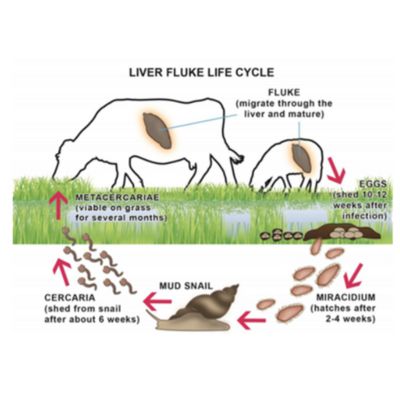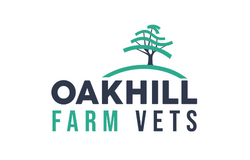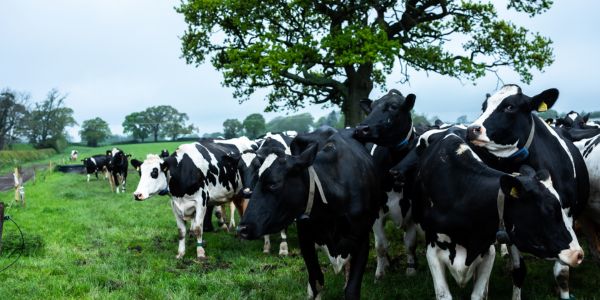LIVER FLUKE IN CATTLE
LIVER FLUKE IN CATTLE
Liver fluke or ‘fasciolosis’ is common in cattle, and according to NADIS costs the cattle industry £23 million each year. The lifecycle involves a snail host which thrives in wet, ambient temperatures and releases cercaria (swimming larvae) between August and October that infect cattle and cause disease that is seen from mid-winter onwards.

SIGNS OF LIVER FLUKE
Clinical signs include scouring, weight loss and reduced growth rates. Fasciolosis can cause anaemia which presents as pale colour of gums and vulva. Cattle affected by liver fluke can also present with submandibular oedema also known as ‘bottle jaw’. Sub-clinical signs such as a decrease in milk yield and quality are common. It has been shown that even a low-grade infection can reduce milk yield by 400 litres per cow per lactation and untreated animals can produce 10% less milk solids. Decreased appetite and reduced feed conversion also lead to poor growth rates and depressed fertility.
Abattoirs can provide reports on liver condemnation due to fluke migration. This can be a useful tool to monitor disease and plan targeted treatment.
It is worth noting that liver fluke can still be a risk in herds that are housed all year round.
TESTING FOR FLUKE
If you are worried about fluke in your herd, tests can be performed on bulk milk samples, coproantigen tests on pooled or individual faeces samples, as well as individual blood samples. Using bulk milk to monitor for the presence of liver fluke within your herd can help to determine if further diagnostic tests are required before discussing and planning treatment with your vet.
TREATMENT OPTIONS
The main flukicides available are listed, along with the life stages they target. It is important to use the most appropriate flukicide for the life stage responsible for disease in your animals to prevent resistance, resolve clinical disease, and kill all the fluke present in your animals
at the time of treatment.
This list is not exhaustive, if the product you have is not present on the list please discuss with your vet.
It is worth noting that in high-risk years, when the weather is best suited to the snail host’s lifecycle, extra treatments may be required.
There is no immunity to liver fluke, meaning cattle can become reinfected at any age if returned to high-risk pasture. Therefore, pasture management such as drainage or fencing off high-risk snail habitats, quarantine of incoming stock, and an annual treatment programme is extremely important for ongoing prevention.
| Active ingredient | Stage | Meat withdrawal | Milk withhold |
|---|---|---|---|
| Albendazole | Adult only | 14 days | 60 hours |
| Oxyclozanide | Adult only | 13 days | 108 hours |
| Closantel | Adult and immature >7 wks | 63 days | Not allowed |
| Triclabendazole | All stages | 56 days | *41-50 days |



